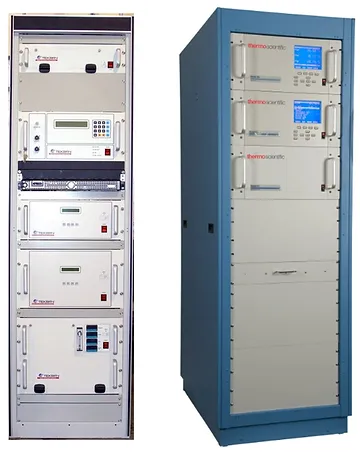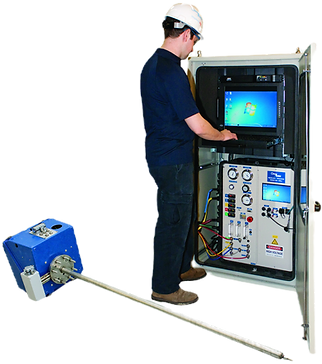Cement plants operate with a wide range of Hg concentrations depending on raw materials and if the in-line raw mill is on or off. This is especially challenging for PS 12A compliant monitors originally designed to sample continuously on units where concentrations remain relatively constant. Starting up with fuel oils that create soot, varying concentrations depending on process conditions or raw materials, intermittent use of halogens and activated carbons create a difficult obstacle course for real-time (PS 12A) mercury monitors to maneuver through while still remaining accurate… let alone reliable. Then there are the problems associated with long umbilical lines such as scrubbing due to build-up, cold spots, burning, or issues with fouled gold catalyst, calibrators, lamp life, and refilling with DI water. They require lots of expensive parts (let’s not even talk about supply chain issues) and highly skilled technician time for maintenance in order to pass the daily/weekly/quarterly system audits and checks.

For these reasons, more and more plants have turned to mercury sorbent traps for compliance monitoring due to the flexibility traps offer plants. Sorbent trap systems are inexpensive, reliable, simple to maintain, and easy to use throughout process changes. For sorbent traps, the mercury swings associated with in-line raw mill On or Off events are no problem as traps simply average the Hg concentration during the entire sampling duration. This is a crucial advantage for sorbent traps which allows plants to report with average concentrations rather than publicly divulge the potentially dramatic peaks and valleys of plant emissions data. In addition, traps are changed out regularly so soot or halogen accumulation is never an interference.
Over and over, sorbent traps have proven themselves to be reliable, user-friendly, and cost-effective. Yet, they possess one major downside. They are not real-time and won’t be able to alarm a plant operator with a potential high Hg event. This can lead to uneasiness in using sorbent traps as a mercury monitoring strategy.
But there is another option!
All the benefits of sorbent traps for compliance monitoring WITH mercury concentration data in real-time!
A HYBRID Strategy!
Thank You 915J REAL-TIME Hg Process CEM!
A mercury process monitor paired with sorbent traps for compliance gives a plant the best opportunity for success from a mercury monitoring standpoint. A process monitor allows you to see in real-time what your sorbent traps see over the period of a week.

However, for the cement industry, no typical mercury monitor will do. The monitors used for the cement industry must be able to handle wide swings in mercury concentration depending on the raw materials being used and if the in-line raw mill is on or off. No other mercury monitor in the world can handle dramatic swings like the 915J. This is due to the customized dilution system and custom-built adjustable high-span calibrator specifically designed for the cement industry. Further, speciation might be necessary depending on the type of mercury control in use to reduce mercury emissions, especially if ACI or brominated PAC is chosen. The 915J has proven to have unbiased results with halogen injection and brominated carbons. Many other mercury CEMs struggle with this as their data show biased low mercury readings when halogen injection is incorporated into the mercury control strategy. Issues can also arise during kiln startups with #2 fuel oil or when burning tire fluff or other fuels that cause soot buildup in the probe or on the filters. However, the 915J is able to overcome this challenge since it can be automatically controlled by the plants’ DAHS to start sampling when the kiln feed is on.
The 915J has been specifically tailored for the cement industry. It is sensitive over a wide range and measures mercury without interference by utilizing Zeeman background correction technology. Other real-time CEMs on the market were designed according to compliance with Performance Specification 12A and thus have certain limitations that lead to high maintenance and deficient sensitivity, among other issues. The simplicity and reliability of sorbent traps for compliance, paired with the sensitivity and low maintenance of the 915J Hg Process Monitor offer the BEST chance for successful mercury monitoring.
I know…You must be saying it’s crazy to maintain 2 systems!
But, in reality, this Hybrid approach is more reliable, more cost-effective, and requires less maintenance than using a PS 12A Compliant Mercury CEM.
Let us prove it to you! Please contact Alexandra for a quote and/or a detailed presentation.

